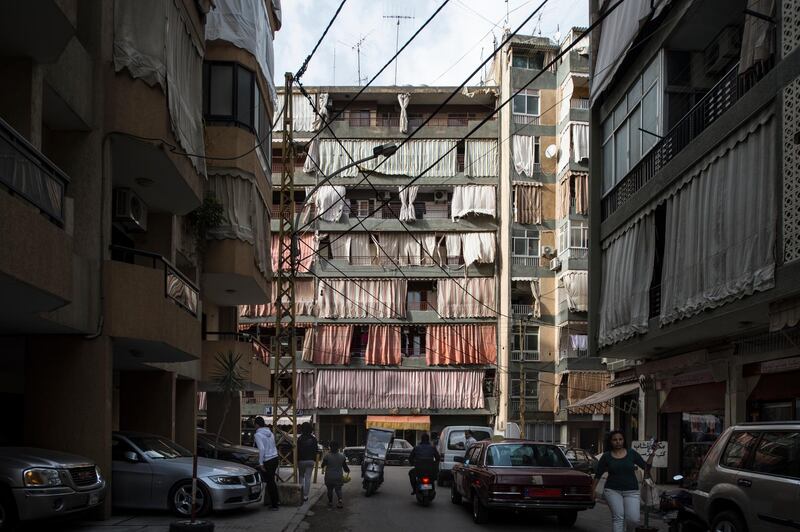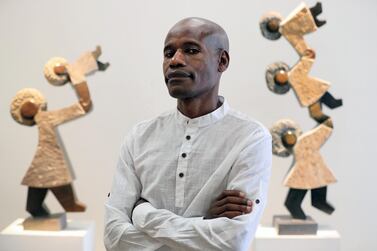Seen from above, Beirut is a sprawling mass of cheap concrete apartment blocks and soaring glass skyscrapers, which dwindle in height as they approach the suburbs, where the city begins to eat away at the mountains. Seen from within, Lebanon’s capital city is an overwhelming maze of narrow alleyways and looming overpasses, abandoned dwellings falling into ruin and yawning chasms of construction sites primed for new foundations. Seen from afar, it is a puzzle with no internal logic, chaotic yet fascinating in its meandering lines and jumbled architecture.
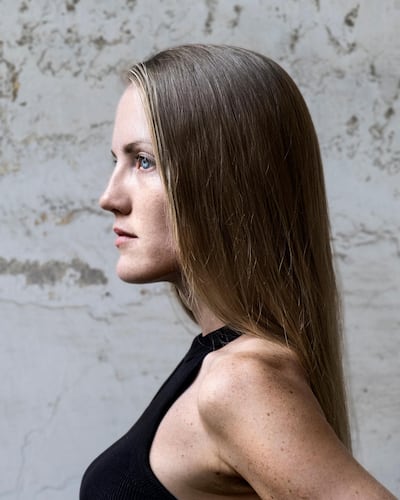
Beirut, Naked City, a new book of photographs by Ieva Saudargaite Douaihi, published by Alexandre Medawar, reveals the city's expanse and drama, its internal workings and hidden corners. Saudargaite Douaihi's photographs are atmospheric and meticulously composed. Together, they present a systematic, unsentimental documentation of Beirut's urban fabric and raw materiality. Beirut, Naked City conveys the capital as a many-layered palimpsest, in which new buildings smother old, concrete is king and nothing is ever permanent.
In consultation with the photographer, Medawar selected more than 150 images to include in the book, dividing them into four chapters: Overview, Artefacts, Neighbourhoods and Future. Three introductory texts by Medawar, and Lebanese essayists Dominique Edde and Jad Tabet, delve into the history of Beirut and the importance of Saudargaite Douaihi’s contribution to documenting the ever-changing city.
In her beautiful yet sparse photographs, Saudargaite Douaihi lends equal weight to a spectacular panorama of the city and a close-up of rubbish dumped beside the highway. She captures the overpasses and the car parks, the ephemeral shapes of informal shelters, the timeless permanency of graveyards, the sleek high rises and the tangled electrical wires draped across streets like industrial bunting. In her images, the city is at once ugly and beautiful, familiar and strange.
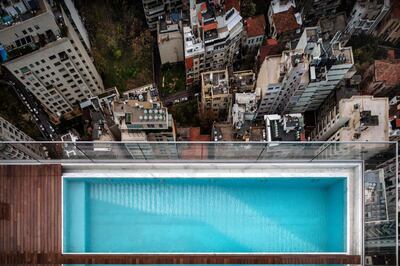
Taking photographs is a way of charting how the city changes and evolves, archiving the constant cycle of destruction and construction.
“It’s always going to be ahead of you in some places,” says Saudargaite Douaihi, who has been documenting the city since 2013 and intends to continue indefinitely. “I can’t be everywhere at the same time, although that is my wish. I always want to know what is happening in every part of the city – what’s changing, what’s being destroyed, what’s popping up, where people are moving to, where everything is happening.”
Born in Lithuania, Saudargaite Douaihi grew up in Abu Dhabi, where she went to school, before moving to Beirut in 2007. She did not immediately take to the city.
“It took me five or six years to find my place, find my friends and to discover the city on my own terms, and I found it very exciting,” she says. “After that I became really interested in cities that are more organic in their organisation. When I go to Europe or North America I’m kind of bored after a few days because it’s just all the same – it’s all predictable.”
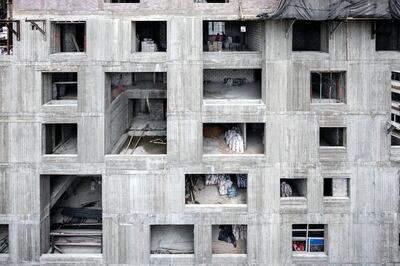
Her photographs convey the beauty and indefinable charm of the city without masking the dirt and the poverty, something she believes is easier for her as an adoptive resident.
“There are so many photos where you only see the beauty or the pretty side. That is there already, we don’t need to add to it,” she says. “Some people might feel like, ‘If we show the ugly part then it means we are ugly.’ I don’t see it that way. It’s not ugly because of the people, it’s ugly because of all the unfortunate events that have happened over so many years, and the government is the responsible party.”
A trained architect, Saudargaite Douaihi takes an approach to photography that is at once intuitive and academic. As she walks the streets of Beirut, camera in hand, she attempts to decipher and catalogue the thousands of decisions and accidents that have shaped the city over the centuries.
“I read the city in a different way, perhaps, because I’m informed through my studies and my knowledge of architecture,” she reflects. “I read all the layers – the political, judicial, economic, environmental … I try to capture that so other people can also read it.”
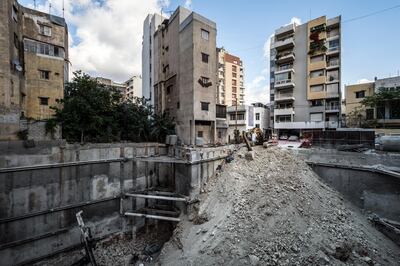
One element of continuity throughout the diverse series of images is how few of them contain human figures. Taken on overcast or smoggy days, her photographs capture a grey city, atmospheric and haunted, as though peopled by memories and ghosts. Saudargaite Douaihi’s preference for shooting in diffuse light is aesthetic, but she stresses that the lack of human figures in her work is not deliberate.
“I don’t remove them. Most of the time they’re not there,” she says. “I really felt a big difference when the revolution happened and I went out to take photos because suddenly the city is full of people. But most of the time they are in their cars, stuck in traffic. Very few walk … I often like to see people in the window or in the shop – to have these figures inside the city – but my focus is obviously not people themselves, it’s where they live. The city is there to serve the people and they’ve built it, so I’m showing the result of their existence.”
Yet it is telling that both her favourite images do contain human figures. One captures a building under construction. The blank concrete facade is pitted with oblong holes, windows without glass. Inside the rooms, heaps of scaffolding, piles of breezeblocks and stacked sandbags demonstrate the ongoing development. In the bottom right opening, which is partially covered, a man can be glimpsed, asleep on a makeshift bed.
“I love that I came across almost a secret moment, of this man taking a nap in the middle of the day because he’s tired from working or he’s sick,” she says. “I love those moments where you look into somebody’s life for a split second and you can recognise yourself. Who doesn’t take a nap in the middle of the day when they can? So it’s the more human side of the city.”
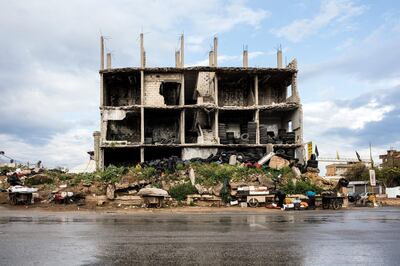
The images in Beirut, Naked City are grouped under titles that are perhaps slightly satirical. The chapter entitled Neighbourhoods opens with a series of photographs of graveyards, rare spaces that are cut off from the day-to-day pulse of the city, undisturbed by the constant cycle of destruction and construction. In a sense, these spaces for the dead reflect the make-up of the living city, Saudargaite Douaihi says. "They could be all together, but they are still divided by sect, which reflects how our neighbourhoods, percentage-wise, are still somewhat concentrated by certain groups … We thought it was interesting to include the dead as well as the living."
The book closes with a series of images entitled Future. Each captures greenery and trees that have spouted amid the concrete of the city, finding cracks, forgotten spaces and abandoned lots that miraculously sustain life.
“I’m always surprised in Beirut. No matter where I go, there is always some kind of lot overgrown by trees,” Saudargaite Douaihi says. “There are some species that grow very quickly, so even if a building has been destroyed recently, in two or three years the lot will be covered in grass and you might have a few trees that have popped up. It doesn’t take that long for nature to take over the space.”
The message of the chapter is both optimistic and apocalyptic. “No matter how far we damage what we have, eventually, when we disappear, nature will take over.”
